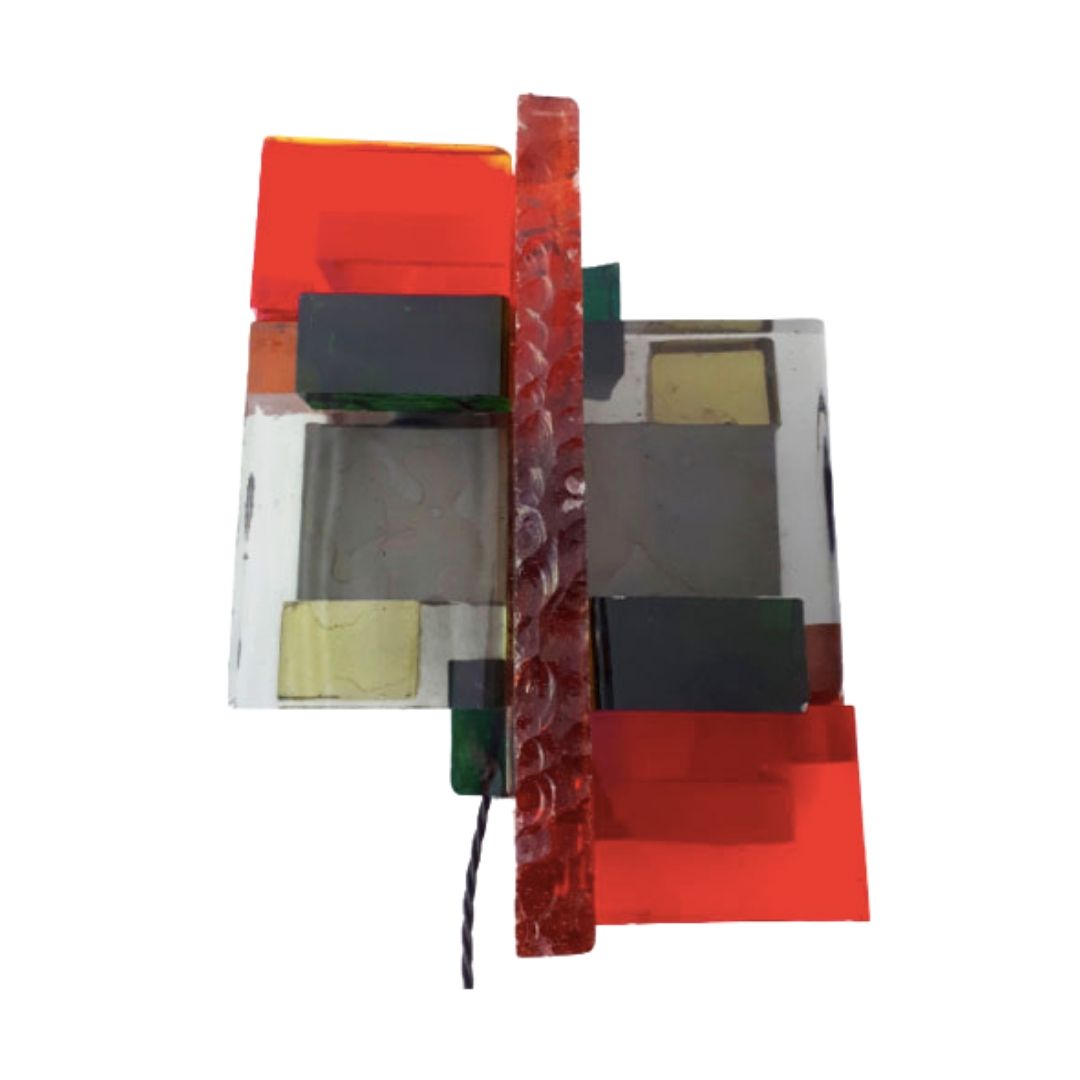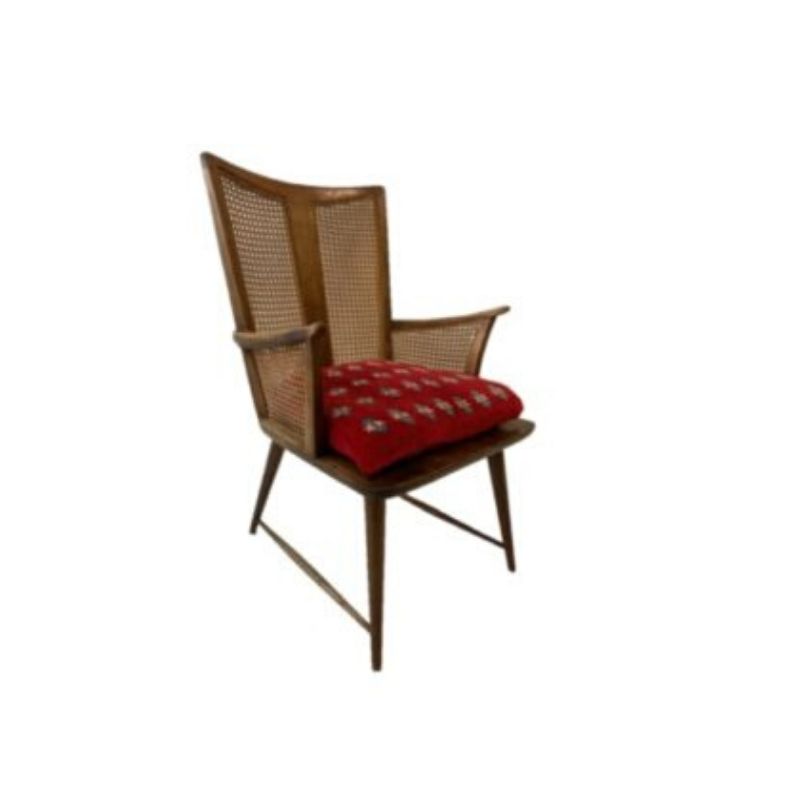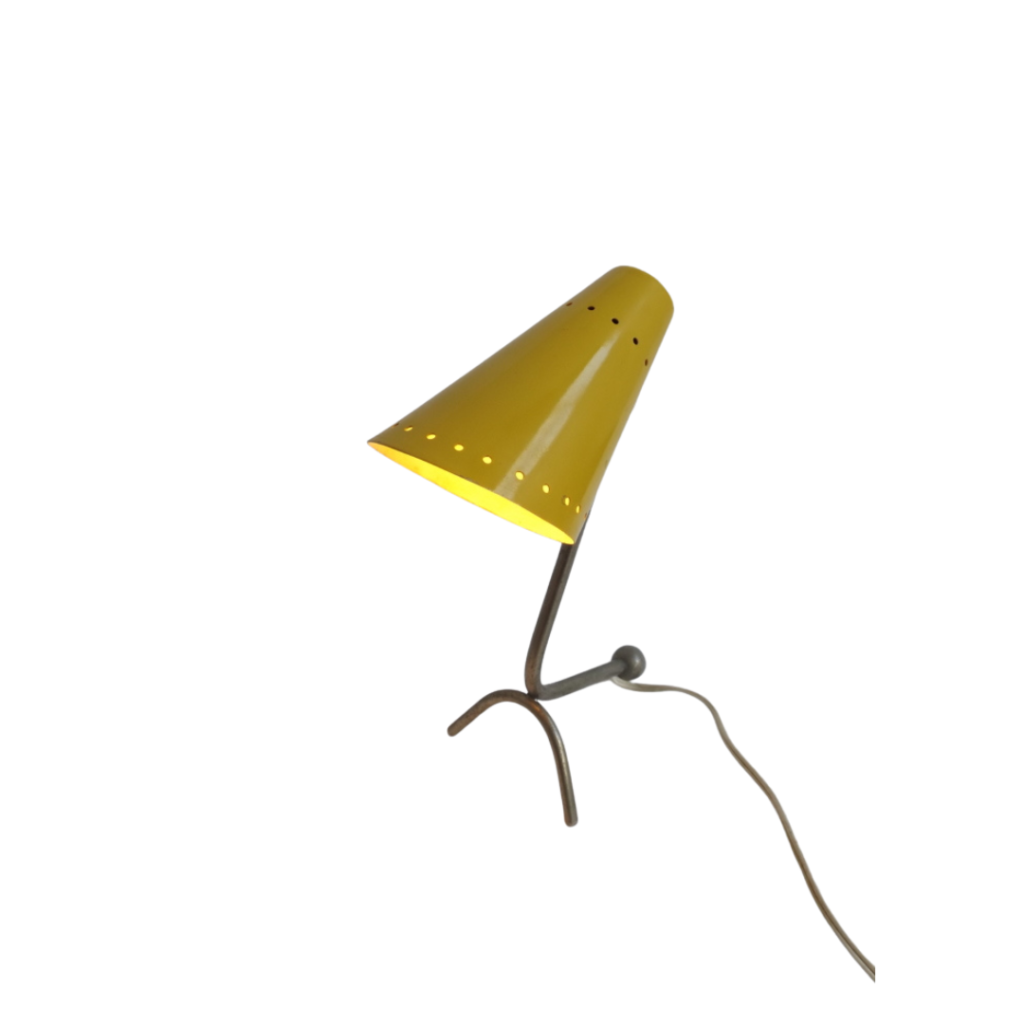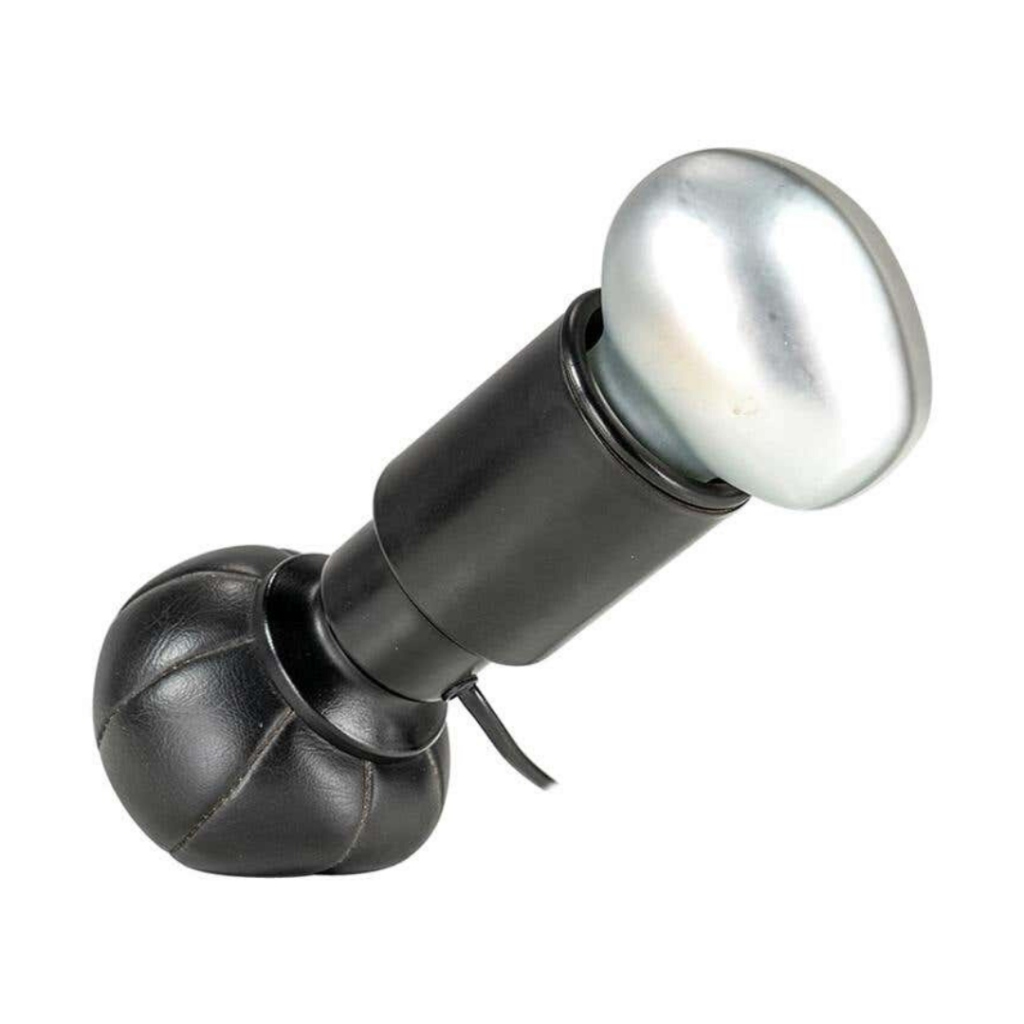Dear SCS...
"...Forgive me for the desire to learn the design process instead of the politics influencing design. To me, "Design" is merely a good idea, not a social statement. I am tired of social statements, just design a good chair or toaster, for God's sake and let it stand on its own merit..."
I would gladly discuss the process, and I think we have done so in the past and could start it again at any time. Without wanting to exclude it, I fear we sooner or later get into the "elitist" position you are fighting so fearlessly. I am quite sure that someone will encourage us to "...just design the toaster..." and not discuss the way you are doing it or how you combined informed intuition with research, logical deduction and knowledge of the production processes to bring the "efficient bread warming devise" about.
It is my perception that, no matter how we turn it, there is a political choice behind every product. The context in which we exercise "the process" is political to. Look at the endless threads about the respect or lack of respect of patents and other intellectual property. These are not moral questions about private property and the respect of it, it is all about the political will to encourage innovative work by protecting it and to make secret procedures generally known by exchanging the description against a 20+ years of exclusivity. It started under Elisabeth the 1st as smart political opportunism in order to promote the art of stained glass windows and depending on political will it was either neglected, for instance by the young American republic who did not want to curtail the entrepreneurial possibilities of knowledgeable immigrants by respecting British and other European patents, or re-enforced for the opposite reasons. By using to use a particular material and the ecological footprint that comes with it, we as designers certainly make a political statement. In other words the context in which we make toasters has also a political component. I often wish that we would have more respect for the inherent democratic character of the market place. In other words, for the fact that users make a choice and "vote" by buying the product or not. It is unfortunate, but that simple mechanism has been perverted long since. In the early years of the car industry, GM for instance, knowing that a lot of people preferred public transportation, bought systematically public transportation companies in order to run them in the ground by mis-management and by using their capital for all other purposes than the continuity of the company. Rightly so, GM was taken to the courts for doing so and the judges at different levels of appeal agreed with the plaintiffs.
cont.
These are politically driven decisions. The origin of part of this inappropriate behaviour is the inability of the designers to enter a productive dialogue with the users. A dialogue that would result in products that people really want, instead of products that have to be put into an artificial context (that of advertising) to change the user?s expectations rather than the real service the product provides. There are of course zillions of other examples about the tight links between politics and design and although I share your interest in the process of design I am not willing to exclude those considerations just to keep it simple. To paraphrase yet another French philosopher, I certainly would like to pursue very simple goals in life like: giving myself and others pleasure, and do it without hurting others or myself. But even that simple hedonistic goal is full of complex choices and you know what, I enjoy discussing them. You might find them elitist, but I can not see how that would hurt anybody.
Under intellectualized drivel?
Me thinks thou dost project to much, Paulanna et al. 🙂
Squirm and reject complicity and hurl invective, as you will, but you cannot separate design from politics any more than you can separate it from economics. Frankly it exhibits a rather stark moral cowardice to live in denial about the politics intrinsic to design
Each choice of material puts a designer in bed with a resource extractor. Resource extractors are corporations that operate economically and politically to serve their controlling owners' investment interests. The resource corporations are usually owned and/or financed by transgenerational members of an oligarchy. Some play by the rules of the societies they extract the resources from. But many bribe governments, enable grain dumping to drive the peasants off the land, install dictators to deal with those who want to carry on old ways (sometimes legitimate, sometimes enormously corrupt as well), enable heroin and cocaine operations to help finance the bakshish and paramilitary activities and death squads used to get enough control to extract the raw materials. The resource corporations rely on paramilitary armies when the dictator cannot squelch resistance.
Oh, and the oligarchy and its resource corporations also impose their political wills on their own government, say, in USA, UK, France, Germany, Japan, China, etc. to use their own government's intel and military apparatus, operating initially from the sanctuary of the embassy, to orchestrate the destabilization and terrorizing of societies that dare to resist. If that does not work, they begin covert military activites from secret bases inside and outside the society they seek to subjugate in order to extract its raw materials. If that does not work, oligarchy and its corporate extractive agents then try "containment" and covert aerial bombardment and special ops. If that does not work, they form terrorist organizations like al qaeda and send those organizations in to terrorize and false flag the society with the raw materials desired. They use the terrorist organizations to inflame prejudices and aggression among indigenous groups until civil war breaks out within the country and a "peace keeping mission" just coincidentally has to be undertaken to enable "regime change."
continued
If they can't trigger a civil war with terrorist organizations, then they hire a terrorist organization to false flag attack something that can be used as a justification of invading the tiny, resistant society, and occupy it. They immediately ramp up the terrorism, round the clock military war making, and build torture prisons. They employ a variety of torturers ranging from spooks, to regular army, to private contractors, to allied states. They use torture to dirty recruit tens of thousands of informants that are then released back into the population who then begin informing on their fellow citizens to avoid being tortured more. Throw in a few Fallujahs just to show the "gooks" and "rag heads," as the torturers and murderers disrespectfully call them, what could really be done. Slowly gut the country so all indigenous societal organizations break down. Degrade the infrastructure so that hundreds of thouands, or millions, die and generational ties are shattered. If the oligarchy has a built in prejudice against the society, litter the place with expended depleted uranium munitions so that the gene pool is being mutated and cancers are spread for several generations. Slowly, over time, the society is convulsed into something approximating Guatemala, Honduras, Nicaragua, Chiappas Mexico, Chile, Iraq, Afghanistan, western equatorial Africa, East Timor, Indonesia, most anywhere you can think of that has recently been subjugated to secure oil fields, or the strategic flank of oil fields.
If you design products requiring oil based products, you are enabling this one particular process I have described related to oil. (Note: there are others for other raw materials.) You are creating reasons for the resource corporations and their "oiligarchic" owners to continue to "acquire" oil fields and to ensure "access." To design products from oil based products is to take an unmistakably political stance.
Be careful what you design with. The materials you choose to design with may at this very moment may be being tortured and killed for; this no exaggeration at all...not one whit of intellectual drivel...just fact.
continued
Designers are hardly alone in this horrific complicity that must end.
Every citizen who drives a car faces a similar political complicity. We truly are all in this crime together. Everyone is drunk at the speak easy of illegal raw materials.
But designers are actually out there making a living by trying to create new ways and new things to make. They are actually making choices between one material and another to use. Designers can and do have an enormous impact on what the public wants and so what raw materials the resource extractors either acquire peacefully, or murder to get.
Designers are of course limited in what they can do to change the calculus of murder and torture for raw materials. To some extent, they have to work with the materials available that the rabid cat drags in, and many raw materials are dragged in/extracted in the most heinous ways.
But if designers and other professionals organize, and if investors start investing in torture-free funds, and voice preferences for materials acquired by peaceful, honest means, instead of by those involving narco trafficing, paramilitary activity, torture, death squads, and outright theft of the materials, change will come likely within a decade, maybe two.
We have the model of South Africa. Nelson Mandela, great though he is and was, could only call the world's attention to the problem of apartheid. He needed a show of conscience by western investors who began to demand apartheid free investment funds. Within a decade, the oilgarchies of the G8 countries and of South Africa could find a way to end Apartheid.
Any human institution can be...
Any human institution can be undone in a moment, if investors and professionals decide to take it on. Human institutions are, though sticky as the scholars say, actually quite fragile. It only took the Bush Adminstration a few short years to make 600 year old habeaus corpus permanently conditional in the USA. It only took them a few years to shred much of the 200 year old Bill of Rights. It only took them a few years to institute torture prisons and abductions and kangaroo courts called military tribunals for those abducted.
Appealing to the oligarchies pocket book, either enriching it, or reducing it, is always the quickest way to profound and pervasive change. As the old business saying goes, don't get mad, don't get even, get their money. Or put another way, hit them where it hurts--in their pocket books.
The environmental movement also shows that green investment can have a significant effect. Designers, at least some of them, are making more and more environmentally friendly choices. All it took was a few years of alternative energy development the last decade and suddenly, "oiligarchs" are no longer talking about Peak Oil Theory and the end of oil. That hoax is over. And now we no longer talk about global warming, either. We talk about global climate change. You can hear the "oiligarchs" saying, well, the global warming idea was great when it pushed oil and gas prices up, and made people want to invade Iraq to get their oil, but, hey, wait a minute, we don't want everyone riding bikes and driving biodiesel cars and building wind farms, do we? Shucks, let's not talk about global warming anymore. Call it global climate change till we figure out what to do next.
But back to design's political dimension of environment. No one minds that design is a hugely political act when viewed in this environmental context. Everyone loves the politics of design when it is green.
continued
But designers, like most persons, are very afraid to think about, much less tangle with torturers and murderers being used to get their raw materials for them. They are very afraid to challenge the oligarchs and their resource corporations and their governments, because these are scary people and scary organizations. It means challenging the resource companies, and political parties that the oligarchies largely own and control.
Designers here appear to know instinctively that there is less wiggle room in acting politically about resource extraction in any kind of effective, influential collective fashion, than say acting similarly with regards to apartheid, or the environment.
Designers taking on resource extraction issues head on, is scary, because the life blood of designers is raw materials to make things out of. No raw materials, no designers. Further, no raw materials refined into the latest new miracle materials, and designers don't get to pioneer the next great innovation in products, or at least a lot fewer will get to.
And this is getting very near the crux of it, isn't it? Design is not only a profession, a skill set, and political, it is a way of making one's living.
And cheap, plentiful raw materials are just as good for the designer, as for the producer. It is good to have cheap, plentiful and occasionally new and improved building blocks to play with.
The world would be a harder place to make a living in for producers and designers were raw materials to be expensive and scarce.
And like it or not, under the presently corrupt accounting systems, stealing raw materials with organized torture and murder, and using other people's armies and government budgets, is cheaper than paying for the raw materials fair and square.
It is scary to contemplate just what raw materials supply and cost were acquisition by torture and murder ended.
But designers have to face up to the political reality that without an organized professional ethic against using raw materials gotten by torture and murder, they are just one more kind of illegal drug refiner.
Without a commitment to honestly and fairly extracted raw materials, designers are turning illegally gotten raw materials into refined, designaddictive processed materials for consumption by markets of materials abusers.
Frankly, at present, contemporary society is a bunch of materials abusers and designers are enabling us.
And to repeat for emphasis: designers are enabling us with illegal materials processed into junk--some really good shit, man, and some really bad.
continued
Somehow, we have to turn designaddiction into a legal business for designers and a legal business for users.
How can a society not become riddled with self loathing and decadence, when the most basic and defining characteristic of human beings, their tool making, is in large part based on torturing and murdering for and stealing of raw materials?
Is this plain enough English for you, Paulannna?
Why don't you fucking wake up and listen to the screams in the good shit that you design? You do design, good shit, don't you?
Of course design is political. And of course the politics of design should be part of the design discourse here.
Or are we going to just all act like guests at a dinner in a Luis Bunuel movie here.
Oh, you most certainly do have a discrete charm, Paulanna, but it does not become you as a designer.
Gee whiz, folks, I'm really...
Gee whiz, folks, I'm really becoming baffled by all this. Not the discussion entirely, as it were, which might be - were it not as tense - strangely less interesting, but the great insistence, in such a remarkable forum, of individuals who would seem to want to impose some kind of modality parameter, or otherwise, upon expression.
I normally try to stay out of trouble here, but with regard to people being able to speak their mind in a generally respectful manner, no matter how short or long their posts, how straight or crooked, osage orange or creosote pine, just to try to be clear:
I'm not on the fence.
Well dc, I took the time to...
Well dc, I took the time to read all 6 consecutive posts hoping that you may have addressed the points I made about your previous threads and.....nothing. Rien. Nada. Not a word out of so many. Just six consecutive posts where you once again expound your world view - you don't like capitalism - with considerations of the role of the designer awkwardly tacked on to provide some legitimacy to posting it here in the first place.
As an aside I should add that clumsily name dropping Bunuel and (oh what was it before...oh yeah Ionesco) quite inappropriately is really quite, um, adolescent. You'll be embarassed by it one day.
Hi DAerists!
I second Hudsonhonu and WoofWoof.
what's going on?
Those who say that design is not just intellectualism and philosophy, but much more sides to concern, yes, it's true. But don't forget that intellectualism side IS one.
So if we have people that can fortunately contribute to them, let them do it.
Yes, there are empty spaces in materials, technical subjects, etc etc (design n economy, design n cultural I'd add)
OK Come on!!, let's start the respective threads to study those subjects!!!
Don't drive the average level downsizing 🙂
Peronists Koenists DAerists
We had some months with not many threads that interested too much people. There was even one thread that commented that the forum was getting boring, and most people agreed. At the same time we had one workshop destroyed, one birth, one divorece, and more. The forum was not hot, because the action was outside!
One day, Koen, the older poster [just because is the one that started the same day the forum did ;-)] posted again.
That thread was very popluar with many posts, the longest in many months.
And that thread becamed hot. But what was supouse to be a party, ended as a mess.
What had happen? How could had happen this?
As this is a political thread, I'm not afraid to run off topic if I tell a story:
Just yesterday I saw on tv a program conmemoring and triyng to explaing what had hapen at "masacre de Ezeiza" (local issue), as I was a child so I don't remerber it at all:
On June 20, 1973 near the Ezeiza International Airport in Buenos Aires, Peronist masses, including many young people, had gathered there to acclaim Juan Perón's definitive return from an 18-year exile in Spain. The police counted three and a half million people, some say the larger quantity of people at an event in all history, went to Ezeiza to welcome him. And the party became a dister, people begin to fight, some people died.
How? What had happen? Right wing Peronists vs left wing Peronists: Trilpe A ("Argentine Anticommunist Alliance") vs Montoneros. They needed to show who was the one that was more Peronist. They fight to be more near the Peron's tribune. The more near Peron, he will see it more important.
Oversimplification, power interests, etc. some historic reading could be: was for the love they had to Peron.
Ridiculous?, 37 years later is easy to read.
Just a week later, I don't understand what exactly had happen in that Thread nor in this.
I hope that Koen, if he dosen't understand what had happen could read it somehow a kind a demonstration of love.
A strange and inexplicable demonstration of love.
The Relationship Between Design and Populist Politics
Here is extracted some points considered important on an article by Gabrielle Kennedy, 02-07-2009
"The Relationship Between Design and Populist Politics".
Afraid of being boring, I resisted the temptation to copy-paste the complete article (sometimes links disappear), so full article linked below.
......
An architectural wonderland designed to resemble a Disney style medieval castle, is what Van der Velden calls "security aesthetics".
......
design is a prism through which politics and society can be interpreted.
......
"The contribution of Dutch design during that decade was to ironize, to create jokes and new scenarios in a society where politics and conflict had disappeared," says Van der Velden. "A lot of this design departed from the idea of private ownership. The best example is Tejo Remy's collection of drawers, which could be read as a poetic and artistic comment on the whole concept of owning a piece of furniture."
On the very topical subject of just what the next big movement post-Droog will be, Van der Velden starts to think out loud. "You can see what is happening," he says. "You have architects who are refusing to build in Dubai and who are worrying about social and political embedding of their discipline."
......
In the meantime, throughout the broader world of design, clients are demanding more open source logos and less top-down work imposed on brands by authors. "There is a demand typologies that are much more socially shared," Van der Velden says. "The centrality of the single author is really being discouraged or needs reconfiguration."
Again the best example is the "O" campaign employed by Obama's team during the last presidential election. The O means nothing and potentially everything. "It can stand for many things," Van der Velden says. "One of them is an unspecified idea of optimism."
In that way it has become more important for design to recognize the great complexity of the contemporary world, and work with that while hiding part of that complexity in order to be functional and useful. "It is about that kind of tension," says Van der Velden.
The design zeitgeist then is about less central control. "This does not mean that the result is more democratic," Van der Velden says, "but that things are decided according to a more diverse set of criteria and positions. I think that is the new ism."
......
http://www.design.nl/item/the_relationship_between_design_and_populist_p...
If you need any help, please contact us at – info@designaddict.com









